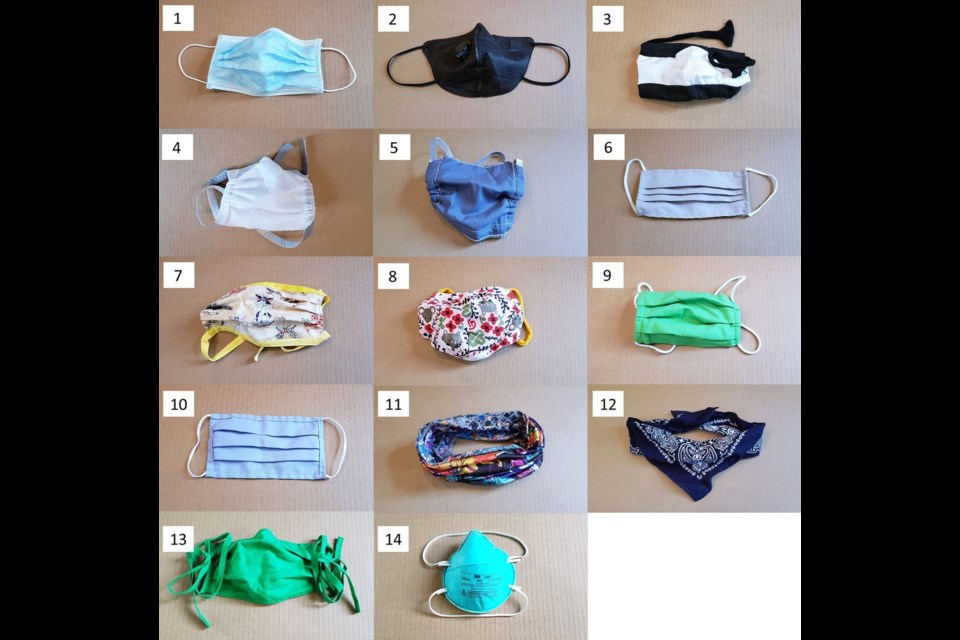A group of researchers who put together a homemade testing system for face masks has reported that some masks are excellent at stopping the spread of mouth droplets while some are not useful at all.
The results were reported this week by Science Advances Magazine, a publication of the American Association for the Advancement of Science.
The research group at Duke University in North Carolina set up a laser optic system with a cellphone camera to measure liquid droplets passing through a selection of 14 different mask types and materials.
A person wearing each mask said the words "Stay healthy, people" ten times in each case and the droplets that expelled from the mouth and escaped the mask material were counted in the laser light.
The researchers said their testing system was "MacGyvered', but it was still effective.
The results reported were expected in one instance — droplets were less than 0.1 per cent using an N95 mask — to seeing droplets actually increase unexpectedly when using a gaiter style fleece mask. That's the type worn around the neck and then pulled up to cover the face. The report also noted that smaller droplets tend to hang in the air longer than the larger droplets, which fall to the ground more quickly.
Although a computer algorithm counted the droplets, the fleece material was found to break down large droplets into smaller droplets, thus increasing the count 110 per cent, said the report.
With the fitted N95 mask rated the most efficient for stopping droplets, the next best mask was the typical surgical mask consisting of the light blue three-layer paper construction with just over 0.1 per cent droplet release rate.
Several other home made style masks reported gradually differing results. A cotton-polypropylene mask was marginally better than the surgical mask and then a number of cotton masks with one, two and three layers were used. It should also be noted that a N95 mask with a valve was tested, but not included in the final results. The researchers discovered that with the valve providing a strong outflow of breath, it did not harm the user but could decrease the protection of those near the user.
A knitted mask was among the least effective, along with a double-layer bandana and then the fleece neck gaiter.
The researchers noted that the primary function of using face masks among the general public is not to protect the user, but to have the user protect others nearby by limiting the amount of droplets expelled from the mouth and nose through speaking, coughing or sneezing.
